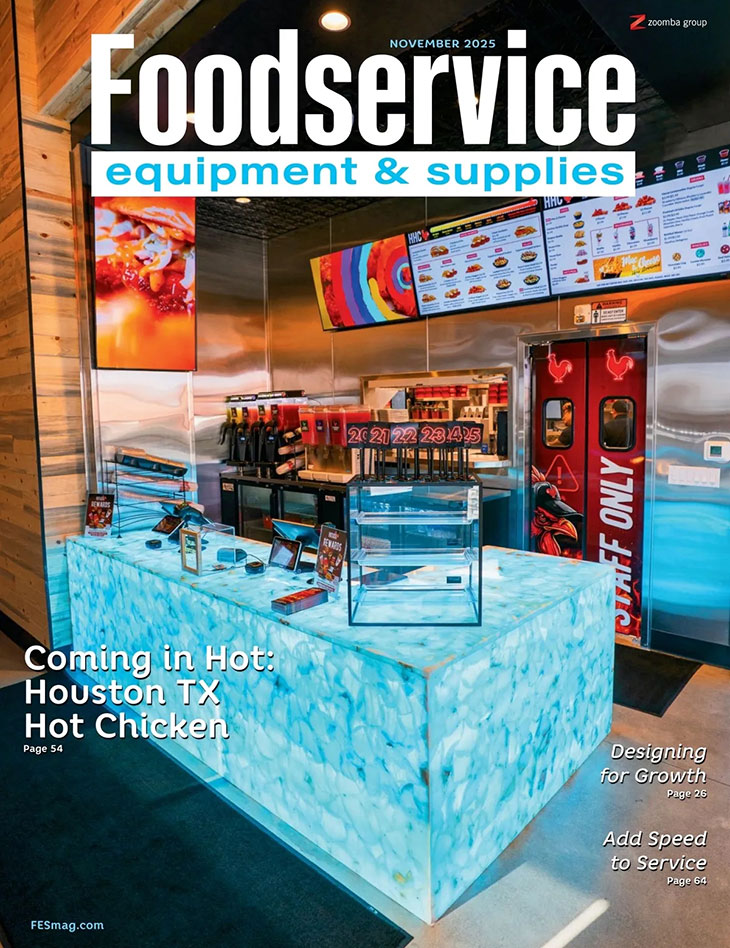Have value meals peaked? What are the details about NSF’s PFAS-free certification? How much did consumers spend per minute at restaurants in 2024? How’s consumer confidence holding up? Answers to these questions and more this week in foodservice.
Is value the new buzz word in foodservice? It sure seems that way.
Generating customer traffic remains a struggle for restaurant operators across all segments. And the best way to drive traffic is by providing value on the customers’ terms.
For some, value takes the form of price, which speaks to why the industry has seen a plethora of meal deals of late. But consumer demand for value deals has peaked, per data from Technomic. In a survey fielded in the fourth quarter of 2024, 59% of consumers said value deals are becoming more important, which is down 13% from the previous quarter. At the same time, the number of restaurants unlikely to offer a value deal in the future increased by 10 points.
The short of it is value is in the eye of the beholder, as Technomic’s blog entitled “7 Things to Know About Value” points out. For some, it’s price-driven while for others value is all about innovative menu items that help support their health or lifestyle goals. For others, speed of service may be the most crucial factor in any value equation.
Consumers may be more price-sensitive but haven’t fundamentally changed where they want to order from based on menu price. According to Technomic’s Ignite Consumer research, value through quality and service remain the most important attributes.
Foodservice News
- Collectively, consumers spent $1 million at restaurants every minute in 2024, per data from Circana. The market research firm also reported that consumer spending at restaurants increased by 2% last year. Circana added that nearly every person dined at least once at one of the top 50 restaurants in the country. Among the top 50 restaurants in the U.S., 34 are QSRs, 11 are casual dining and five are midscale chains. The top 50 chains account for 61% of the entire restaurant industry’s spending despite representing only 24% of all restaurant locations, per Circana. Looking at growth, 28 of the top 50 chains experienced dollar sales growth, while 31 saw an increase in locations.
- Dutch Brothers’ growth plans continue to percolate. The Oregon-based coffee chain plans to have 2,209 locations operational by, you guessed it, 2029, per a company earnings report to investors. Just last month, Dutch Brothers opened its 1,000th location. Dutch Brothers may also come to a supermarket near you soon. The company is working with Trilliant Food & Nutrition to launch a line of packaged coffee and related products it plans to sell through retail outlets. This news comes as Dutch Brothers reported during its first fiscal quarter same-store sales increased 4.6% compared to the same period in 2024.
- Can a boxer/influencer fuel growth for a restaurant chain? Dog Haus hopes that’s the case as it entered into a relationship with the renowned Jake Paul, who acquired two units in Texas and now serves as a company spokesperson, per a Franchise Times story.
- For Hooters, will the new boss be the same as the old boss? HMC Hospitality Group, the restaurant group owned by the six men who founded Hooters in 1983, has a plan in place to reacquire the chain following its bankruptcy filing, per multiple published reports, including this one from Restaurant Business. Despite selling the chain to Hooters of America more than two decades ago, HMC has remained connected to the brand, operating as a franchisee of 22 locations in the Florida and Chicago markets.
- For the second time in five years, Bar Louie has filed for Chapter 11 bankruptcy. This comes shortly after the chain closed locations in Detroit, Nashville and Brunswick, N.J., per a USA Today story. Bar Louie says it has secured commitments from its lender for debtor-in-possession financing to ensure it can maintain operations and complete the restructuring process while meeting its obligations to employees and suppliers for its 31 company-owned units, per a company release.
- The start of the baseball season means rolling out a new lineup of food items. Some of the soon-to-be food stars at ballparks throughout the country include the jibarito and katsu sandwiches, as well as a sausage blanketed in crab dip, as Eater reports.
- NSF has launched a PFAS-free certification. Known as “NSF Certification Guideline 537: PFAS-Free Products for Nonfood Compounds and Food Equipment Materials,” it confirms products are free of per- and polyfluoroalkyl substances (PFAS), a group of synthetic or manufactured materials that resist degradation, also known as “forever chemicals.” PFAS have oil and water-repellant properties and are often used when making water or stain-resistant, nonstick and grease-proof products, including foodservice equipment and nonfood compounds such as food-safe lubricants, cleaners and sanitizers, per a NSF release.
Economic Data
- Personal income increased 0.8% in February, according to estimates from the U.S. Bureau of Economic Analysis. Disposable personal income increased 0.9% and personal consumption expenditures increased 0.4%. The U.S. Federal Reserve monitors PCE closely and February’s increase was 0.1% greater than it had projected, per a United Press International story. In other words, the Fed remains concerned about inflation.
- Consumer sentiment took a tumble in March, per the latest data from the University of Michigan. Its Index of Consumer Sentiment declined 12% compared to February. This includes a “precipitous” 18% decline in the expectations index. Inflation was a key driver of the decline, with consumers anticipating inflation to run at a 5% rate, per a CNBC story. “Consumers continue to worry about the potential for pain amid ongoing economic policy developments. Notably, two-thirds of consumers expect unemployment to rise in the year ahead, the highest reading since 2009. This trend reveals a key vulnerability for consumers, given that strong labor markets and incomes have been the primary source of strength supporting consumer spending in recent years,” said Joanne Hsu, Surveys of Consumers director.
- Initial jobless claims declined 1,000 for a total of 224,000 for the week ending March 22, 2025, per the U.S. Department of Labor. The 4-week moving average was 224,000, a decrease of 4,750 from the previous week.
- The number of job openings came in at 7.6 million in February, reported the U.S. Bureau of Labor Statistics, which considers this “unchanged” from the previous month. Hires and total separations held at 5.4 million and 5.3 million, respectively. Within separations, quits (3.2 million) and layoffs and discharges (1.8 million) changed little.
- New orders for manufactured durable goods increased 0.9% in February, per data from the U.S. Census Bureau. Economists had projected orders would increase 1.0% for the month after experiencing a 3.2% surge the previous month, per a Nasdaq.com story. Transportation was the main driver of this growth increasing by 1.5%. Excluding transportation, new orders increased 0.7%.



